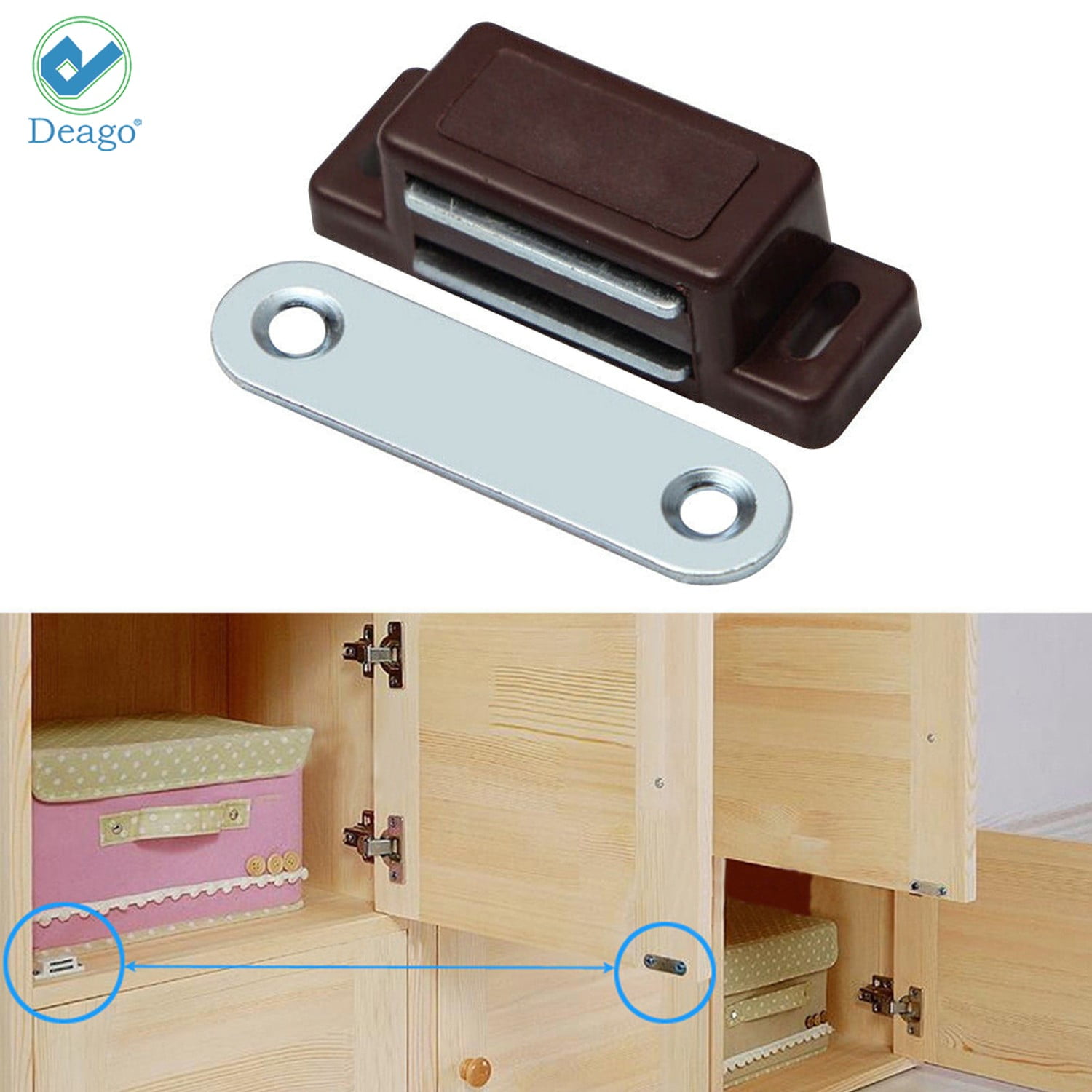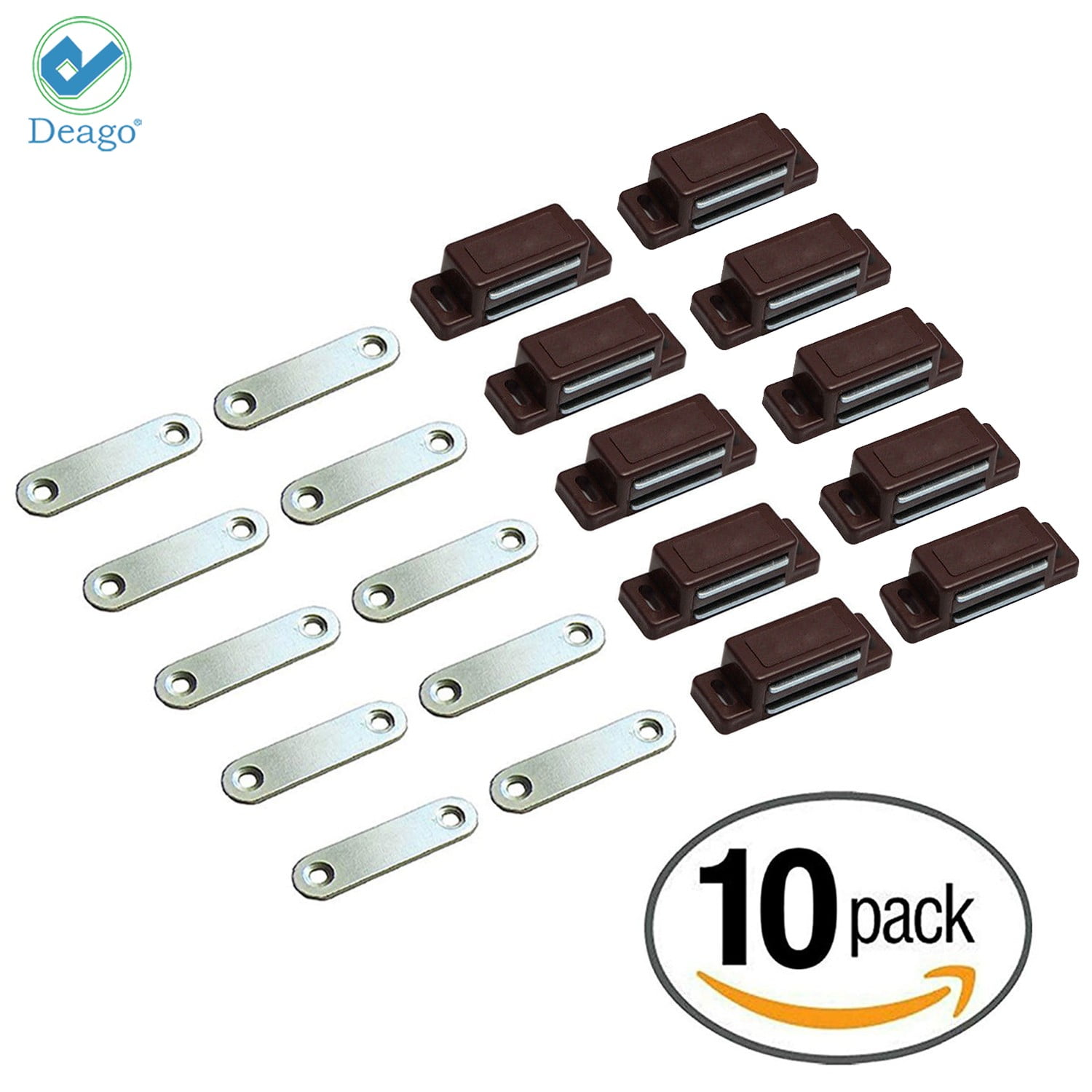Types and Strengths of Strong Cabinet Door Magnets

Right, so you’re after some proper strong magnets for your kitchen cabinets, innit? No more dodgy doors swinging open and spilling your nan’s prize-winning marmalade, yeah? Let’s get into the nitty-gritty of what makes a magnet a proper banger.
Strong cabinet door magnets – Basically, you’ve got a few different types of magnets you can chuck on your cabinets, each with its own vibe. We’ll be comparing their strength, how much they cost, and how long they last. Think of it like choosing your mates – some are strong and reliable, others are a bit…well, dodgy.
Magnet Types, Strengths, Costs, and Durability
This table breaks down the main players in the magnet game. It’s all about finding the right balance between strength, price, and how long it’ll last before it goes all weak and floppy.
| Magnet Type | Holding Power (approx.) | Cost | Durability |
|---|---|---|---|
| Neodymium (NdFeB) | Very High (e.g., 10kg+) | High | High (but susceptible to corrosion) |
| Ferrite (Ceramic) | Medium (e.g., 2-5kg) | Low | Medium (generally quite robust) |
Note: Holding power is massively dependent on the size and shape of the magnet, and these are just rough estimates, bruv.
Magnet Sizes and Shapes and Their Effect on Holding Power
The size and shape of your magnet are mega important. A bigger magnet, generally, means a stronger pull, innit? It’s like having a bigger mate – more muscle, more power.
- Size: Larger magnets generally have a higher holding power due to their increased surface area and magnetic volume. Think of it like this: a bigger magnet has more magnetic oomph.
- Shape: Disc magnets are common, offering a good balance of strength and ease of use. Block magnets can be stronger for their size but might be less aesthetically pleasing.
- Thickness: A thicker magnet will generally have more pull than a thinner one of the same surface area. It’s all about that magnetic density, fam.
Factors Influencing Magnet Strength
Loads of things can affect how strong your magnet is. Get this wrong, and you’ll end up with a magnet that’s about as useful as a chocolate teapot.
- Material Composition: Neodymium magnets are the strongest, but ferrite magnets are cheaper and still pretty decent. It’s all about finding the right balance for your needs, mate.
- Size and Shape: As mentioned before, bigger and thicker magnets usually mean a stronger pull. The shape also plays a part – some shapes are just naturally better at concentrating magnetic force.
- Temperature: High temperatures can weaken magnets. So, if you’re planning on using them in a sauna or something, maybe rethink your life choices. Seriously, though, extreme heat can demagnetize them.
Installation and Application of Strong Cabinet Door Magnets

Right, so you’ve got your mega-strong magnets – wicked! Now, let’s get them bunged onto your cabinets. This ain’t rocket science, but a bit of savvy will make the whole thing a doddle.
Step-by-Step Guide to Installing Strong Cabinet Door Magnets
Getting these bad boys fitted is easier than you think. Follow these steps and you’ll be chilling with perfectly closing cabinets in no time. Safety first, though, innit?
- Gather your tools: You’ll need a tape measure, a pencil, a drill (with the right drill bit for your screws), screws (matching your cabinet material), a screwdriver, and of course, your super-strong magnets. Maybe a spirit level for extra accuracy, you know, if you’re feeling fancy.
- Measure and mark: Carefully measure where you want to place the magnets on both the door and the cabinet frame. Make sure they align perfectly – a wonky magnet is a massive vibe kill.
- Pre-drill holes (if necessary): Depending on your cabinet material, you might need to pre-drill pilot holes to prevent the wood from splitting. This is especially important for harder woods.
- Attach the magnets: Securely screw the magnets into place. Don’t overtighten the screws, or you’ll risk damaging the magnets or the cabinet.
- Test the closure: Give it a go! Check if the doors close smoothly and securely. If not, you might need to adjust the position of the magnets slightly.
Methods for Attaching Strong Magnets to Cabinet Doors and Frames, Strong cabinet door magnets
There are a few ways to stick these things on. Each has its pros and cons, so choose wisely.
| Method | Advantages | Disadvantages | Suitability |
|---|---|---|---|
| Screwing directly | Strongest hold, most secure. | Requires drilling holes, potentially damaging the cabinet. | Suitable for most cabinet materials, especially wood. |
| Using adhesive | No drilling needed, easy to install. | Might not be as strong as screwing, can weaken over time, especially in high-humidity areas. | Best for lighter cabinets and less frequent use. |
| Magnetic plates/brackets | Provides a stronger magnetic hold than adhesive alone, allows for easier magnet replacement. | Requires extra parts, might be more expensive. | Good for heavier doors or if you anticipate needing to replace magnets easily. |
| Using existing hardware | No extra holes needed, cost effective. | Limited to existing hardware, might not provide optimal positioning. | Best if existing cabinet hardware can be adapted to hold magnets. |
Creative Applications of Strong Cabinet Door Magnets
These magnets aren’t just for cabinets, bruv! Get creative!
- Magnetic spice rack: Stick magnets to the back of spice jars and attach them to a magnetic strip on the wall – a seriously tidy kitchen upgrade.
- DIY photo display: Use magnets to hang photos or artwork on a metal surface. Way cooler than using sticky tack.
- Tool organiser: Attach magnets to the back of tools and stick them to a magnetic board in your garage or workshop. No more hunting for that spanner.
- Magnetic whiteboard: Create a magnetic whiteboard by painting a metal sheet and using magnets to hold notes and drawings.
Maintenance and Troubleshooting of Strong Cabinet Door Magnets

Right, so your banging cabinet magnets are playing up? No worries, mate, we’ll sort you out. Keeping these bad boys in tip-top condition isn’t rocket science, but a little TLC goes a long way. We’re talking about making sure your kitchen doors stay shut and your cupboards don’t end up looking like a right mess.
Common problems with strong cabinet door magnets and their solutions are pretty straightforward. Basically, if something’s not working right, there’s usually a simple fix.
- Problem: Magnets aren’t sticking properly. Solution: Check for obstructions like paint build-up, dust, or bits of food. Give the magnet and the metal counterpart a good clean. If the problem persists, the magnet might be weakened; consider replacing it.
- Problem: Doors are slamming shut too hard. Solution: Try adding a small, soft bumper to the door or cabinet frame to cushion the impact. This’ll prevent damage and stop that annoying bang.
- Problem: Magnets are losing their strength. Solution: This is usually a sign of age. Over time, magnets can weaken. Replacing them is the best bet to get that strong hold back.
- Problem: Magnets are misaligned. Solution: Make sure the magnet and its corresponding metal plate are perfectly aligned. Even a slight misalignment can weaken the hold. A bit of tweaking might be all you need.
Keeping your magnets clean and in good nick is mega important for their lifespan. Think of it like this: a bit of regular maintenance will save you a load of hassle in the long run.
- Regular Cleaning: Wipe down the magnets and the corresponding metal plates with a slightly damp cloth. Avoid harsh chemicals, as they could damage the finish. A simple wipe-down will do the trick.
- Inspect Regularly: Check for any signs of damage, such as cracks or chips. If you spot anything dodgy, replace the magnet before it causes more problems.
- Avoid Extreme Temperatures: Extreme heat or cold can affect the strength of the magnets. Keep them away from direct sunlight or heating appliances.
- Proper Storage: If you’re not using the magnets, store them in a cool, dry place, away from other metal objects that might demagnetize them. This’ll keep them in top condition.
